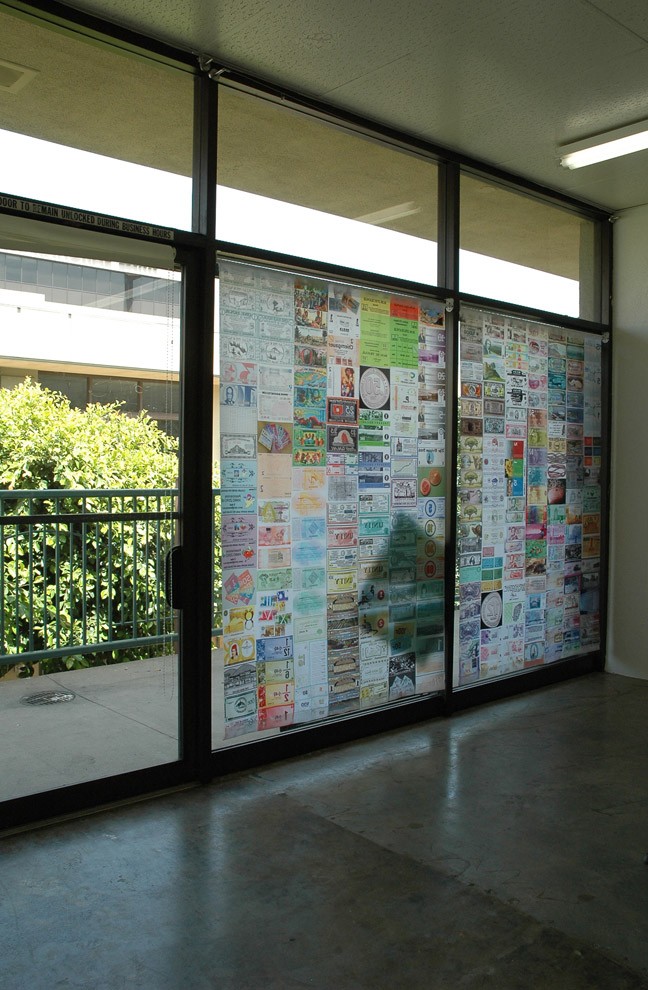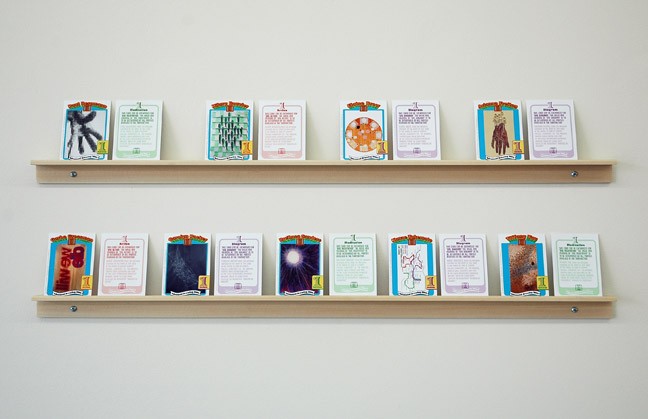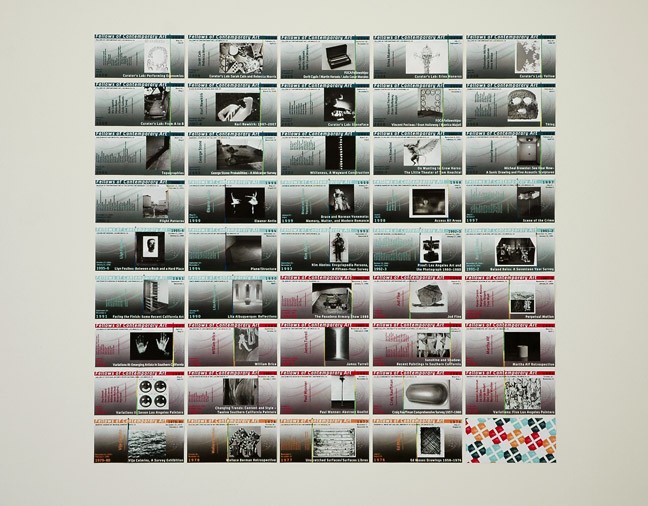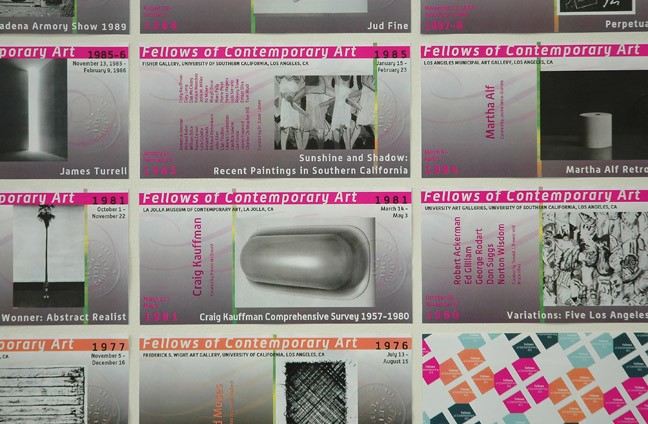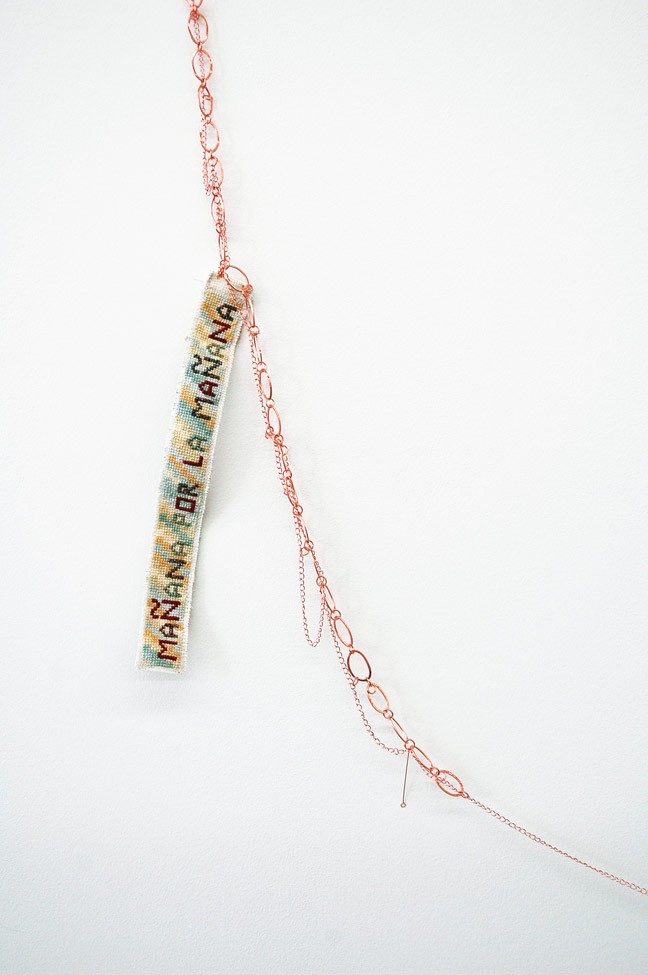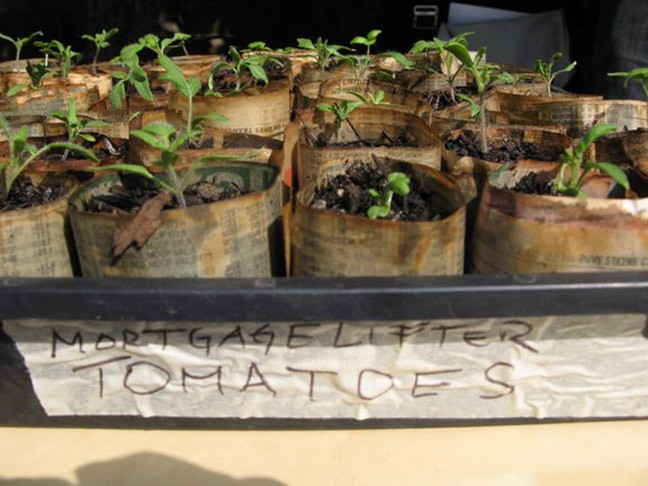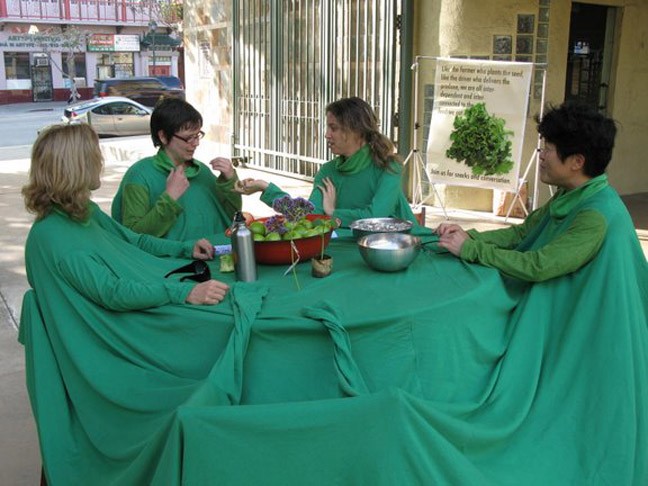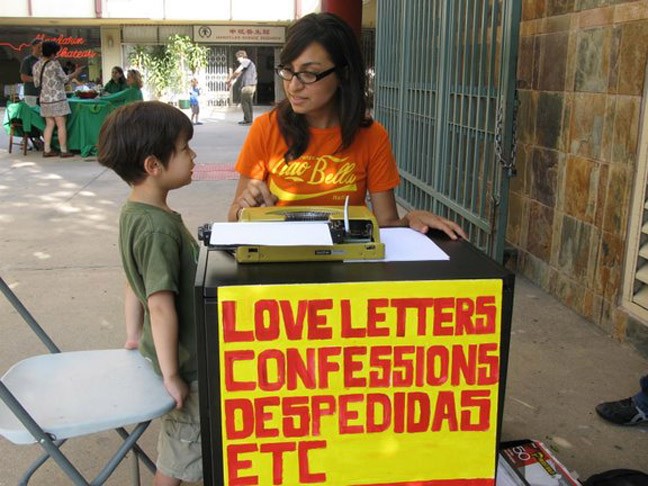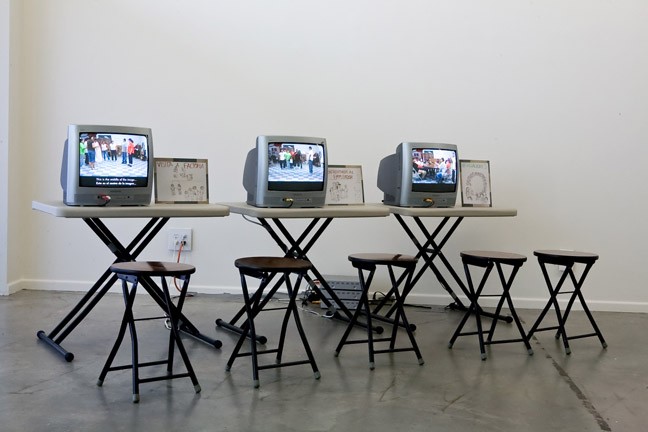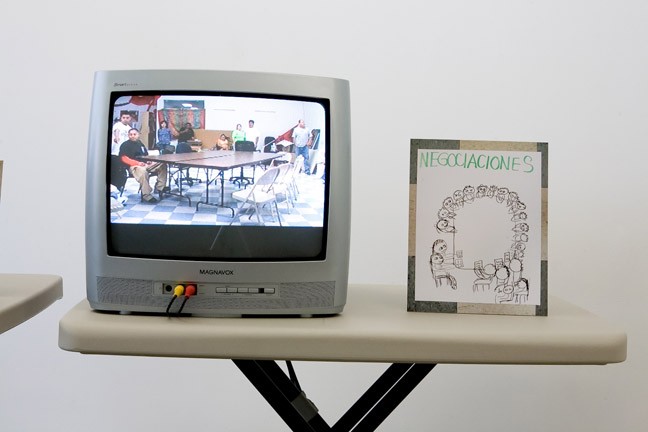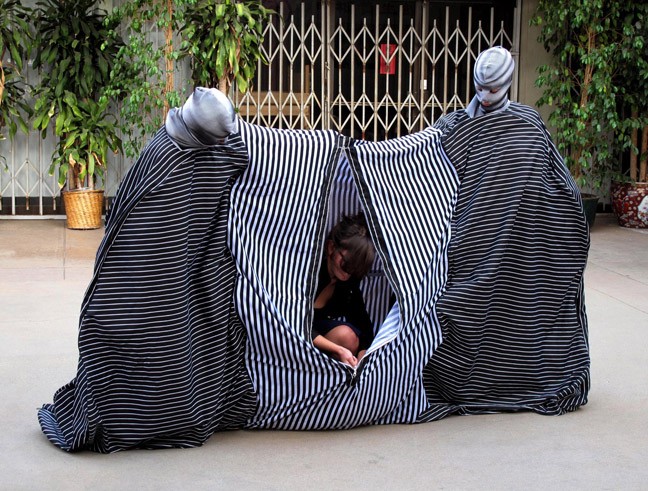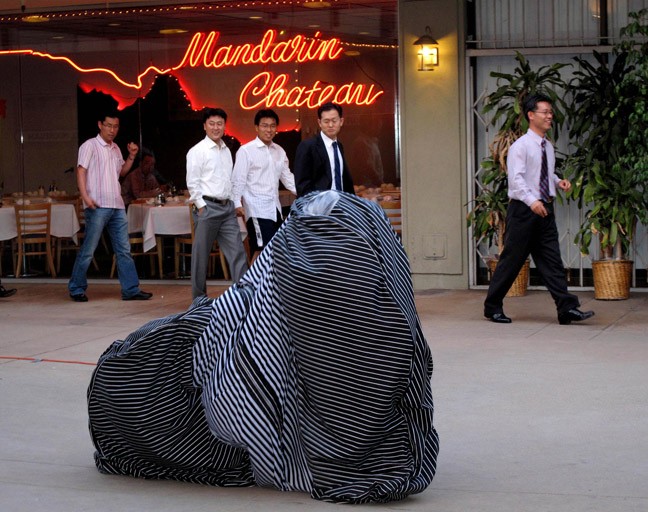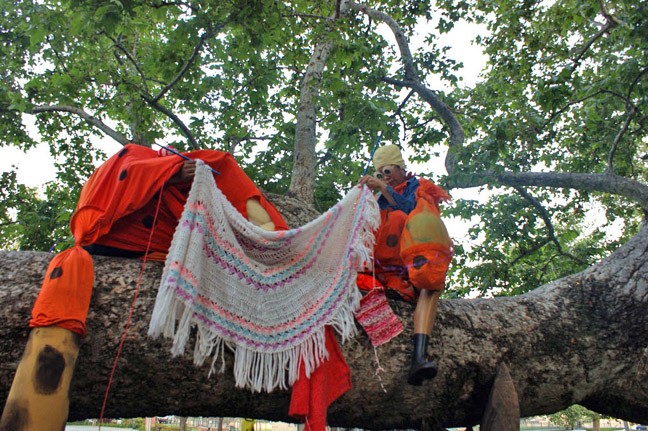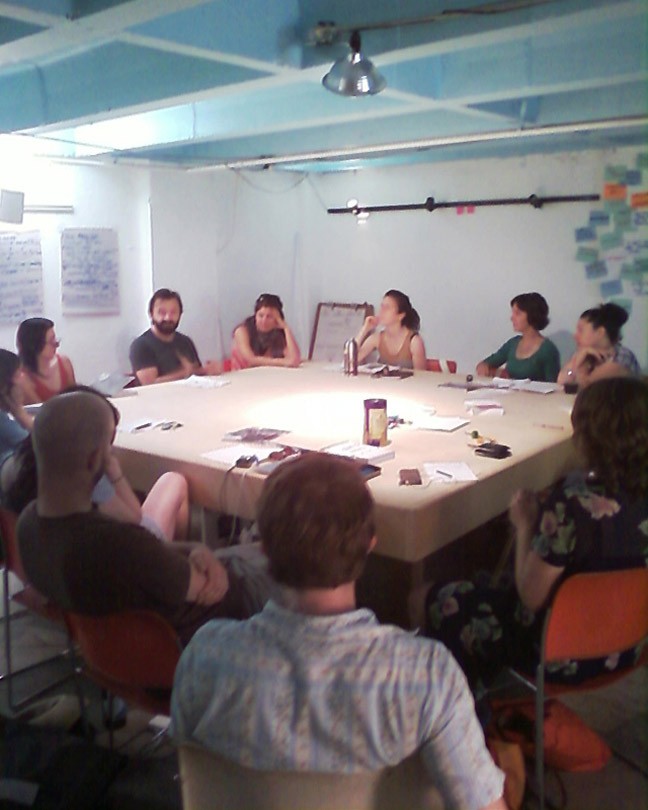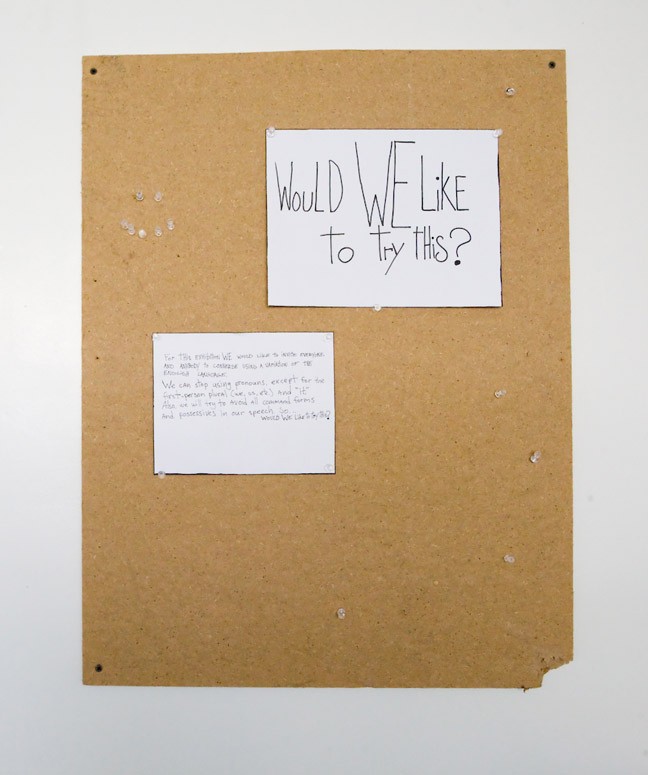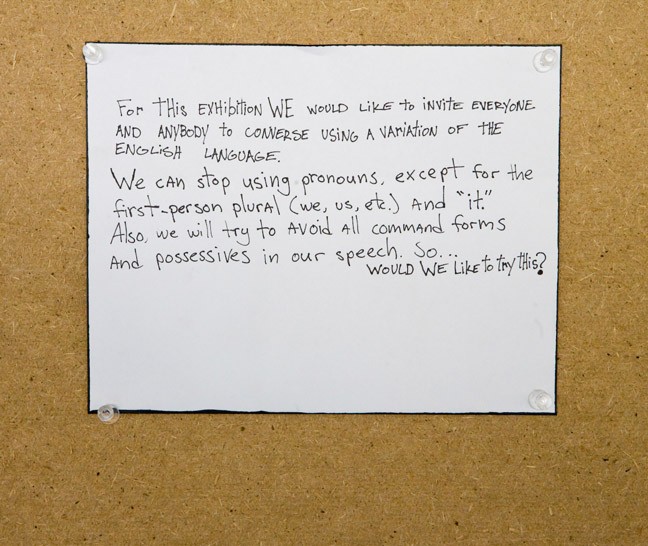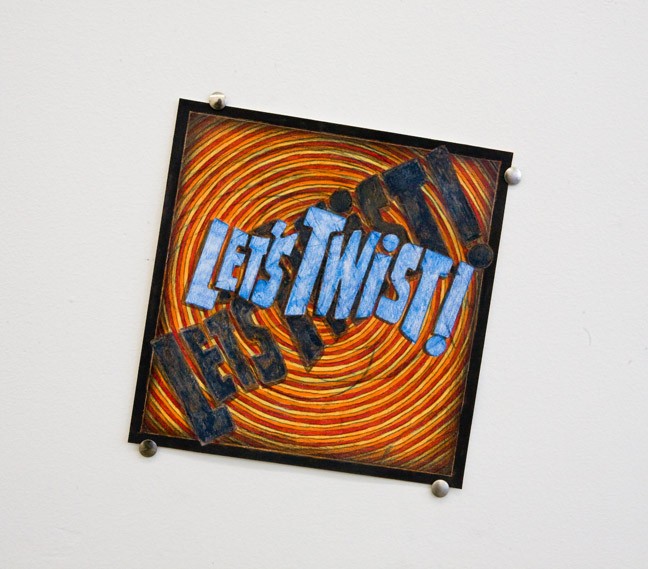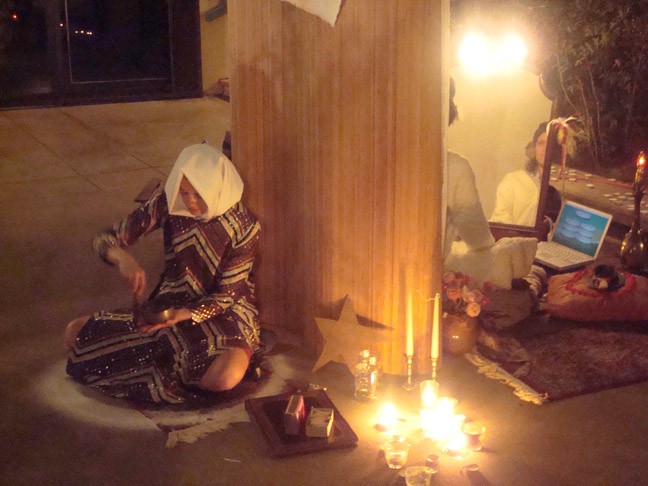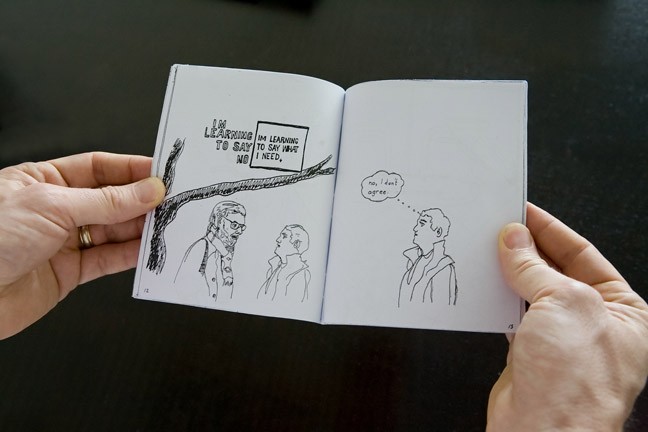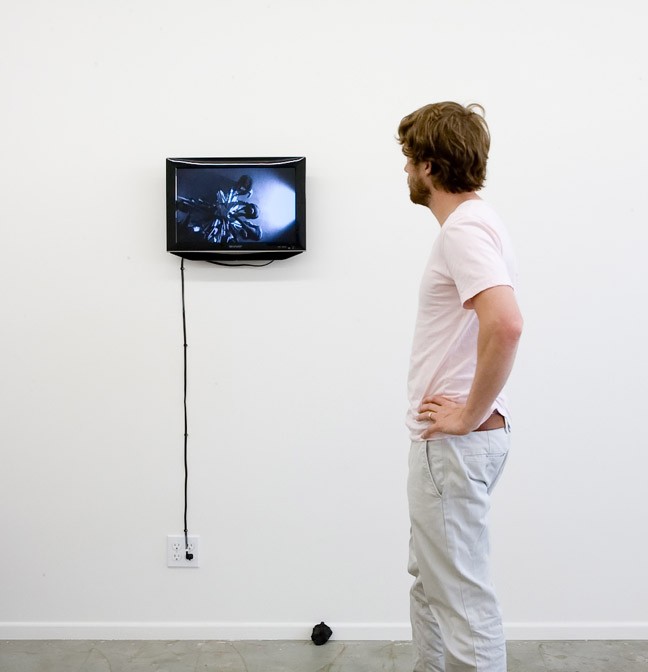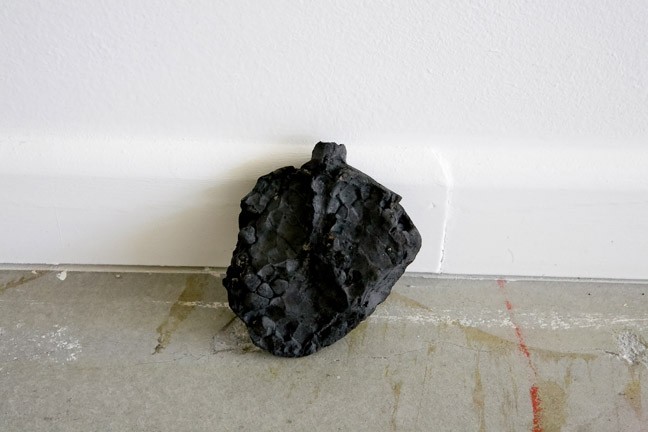
Performing Economies featured artwork in the gallery space and a series of events that occurred throughout the run of the exhibition. The exhibition highlighted art practices that produce innovative systems of exchange and dialog in the midst of a global political and economic crises.
The Artists for Social Justice created a day-long event entitled the “Free Free Market,” a forum for sharing and gifting designed to validate giving and exchange models.
John Burtle and John Barlog intervened with the language structures of the Fellows of Contemporary Art space by inserting performative conversation within the gallery.
CamLab (Anna Mayer and Jemima Wyman) produced architectures for multiple bodies by creating a two-part costume to be occupied by a series of performers. With this creation, they will literalize their collaborative process and disrupt conventional ideas about autonomous bodies.
Dorit Cypis, an artist and mediator, offered “Healer, Heal Thyself,” a performative presentation weaving aesthetics, conflict revolution and somatic reflection to engage us in exchanges of another kind.
Karla Diaz explored multiple narrative strategies between sound and text and will be reading a series of poems and stories based on the experience of growing up in Los Angeles. In particular, Diaz will explore the neighborhood of Boyle Heights and parts of it that were destroyed to build a bigger Police Station.
Liz Glynn showed a single channel black and white video loop depicting a group of participants struggling to tear open a large bundle of sticks. Shot in Milan, where the Fascist era central train station is being restored to its original glory, and the antechamber to the balcony where Mussolini used to speak remains intact, the video enacts a moment of cathartic symbolic resistance.
Marc Herbst presented a comic book that anticipates the environmental and economic certitudes of the near future and outlines the next five years of fashion, including re-interpretations of the notion of success and re-branding the practice of sharing.
Ashley Hunt and Taisha Paggett drew from their work with the Los Angeles based Garment Workers’ Center, to conduct movement and discussion workshops that form a basis for video, photographic, or performance based works. The Journal of Aesthetics and Protest Editorial Collective facilitated a panel around the emotionality of collectivities and social change.
Elana Mann explored the idea of “complementary currencies,” agreements created by communities to fulfill their needs outside of national and international banking structures. Mann collaborated with three communities she is a part of to create a series of new complementary currencies for the exhibition.
Vincent Ramos celebrated the 50th anniversary of Chubby Checker’s version of “The Twist” by creating a series of drawings that function as “contractual” invitations to his artist peers, individuals whom he want to “twist” with.
Adam Overton presented artSpa, a series of workshops and events geared toward expanding and enhancing local artists’ visionary and healing abilities. In each intervention into the gallery space, these entities shared thoughts, strategies, and ideas about new, experimental modes of operation at a time of economic woe, when arts funding and support is dramatically decreasing.
Many of the artists and collectives involved in Performing Economies invited other artists to contribute artwork for the exhibit through panel discussions, curated performance events, or participatory structures. In all over sixty-two artits participated in this project, which had a budget of $1000.
